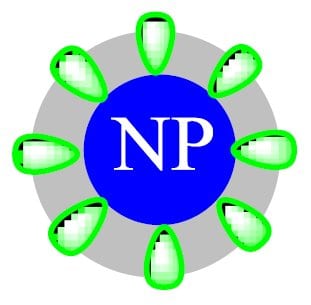Molecular imprinting is a technique used to create ‘customized’ binding cavities that possesses the specific shape and polarity needed to capture only target species, in a “key to lock” process. The technique is valuable in separations, biosensors and biodiagnostics (e.g. as “artificial antibodies”).
Because of the importance of molecularly imprinted materials, improved methods to create more efficient and more specific binding cavities, so that target species can be captured more easily and quickly, are being sought.
In their recently published Review, Xiaochu Ding and Patricia A. Heiden (Michigan Technological University, Houghton) discuss how surface imprinting techniques are designed and performed to give specific binding cavities on the surface of various nanoparticles to produce molecularly imprinted polymeric nanoparticles (MIPNPs) with high capture efficiency to target species. Their review also describes applications and new trends to design multi-functional MIPNPs, which combine specific capturing, separation and detection all-in-one for high throughput applications.
It is expected that efforts to improve specificity and impart multiple capability to MIPNPs will continue, along with efforts to allow these MIPNPs to be mass produced using cost-effective methods to provide high throughput analyses to meet market requirements.


















